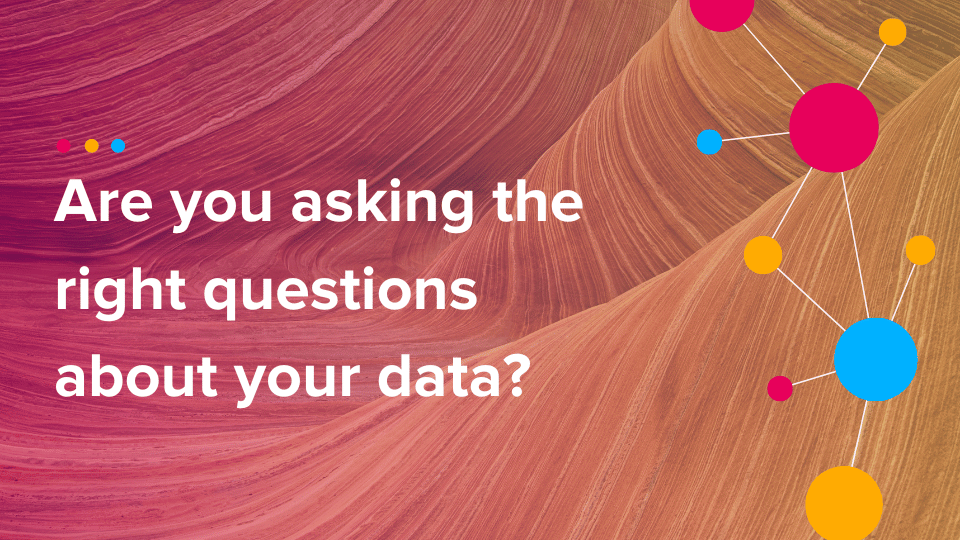Integration Sucks. Here’s how Data-Centricity helps.
What is Data-Centricity?
For the past 40 years, applications have been at the center of everything. Big or small, every application has its own specific model for data, and developers have had to build around that model. This has created a world where new solutions require custom access controls, lengthy integration projects, and lots and lots of data copying.
As a result, enterprise architectures are brittle and fickle. Change one piece, and you risk breaking the whole thing. But it doesn’t have to be that way. The world today may be app-centric, but apps are really just a way to get to what really matters: the data.
Data-Centricity puts data at the heart of your architecture, where it belongs. This solves a number of problems and provides significant advantages like increased privacy protections, dramatically faster build times, and remarkable business agility.
The 3 Big Problems Solved By Data-Centricity
1. Data Silos
For years, we’ve heard that data silos are bad. They stand in the way of innovation and require substantial IT resources (both time and money) to overcome. There are countless products and so-called solutions offered to help “break down your data silos.” So why are data silos still everywhere?
Because there’s the dirty secret of these so-called solutions - they were just creating more silos all along. Without data-centricity, every application still needs its own database. Whether you buy it or build it, you’re still adding silos.
This means you’re escalating operating costs by creating new integration needs, which then drive demand for data lakes or data warehouses - which are really just fancy versions of the same relational databases that got us into this mess in the first place.
The only way to truly get rid of data silos is to adopt a data-centric approach. When data is at the center of your design, it finally allows you to break down silos without building new ones.
2. Lack of Business Agility
Teams want new capabilities, and these days they want them faster than ever. But the more complicated our IT systems become, the more time it takes to perform the integration tasks and other groundwork needed to set the foundation for a new solution.
Low-code and “no-code” tech may enable faster delivery from a front-end perspective, but they do not eliminate the root cause of your problems and alone don’t make your enterprise agile.
IT teams routinely spend 50% of their time and budget on this foundational work. So just imagine what happens when you eliminate that. You can essentially double your IT capacity with your current team by moving to a data-centric approach and eliminating integration work. That’s how to actually operationalize agility.
3. When Did IT Become a Data Copying Machine?
The current data paradigm requires extensive data copying. All of those integration efforts, for example, involve standing up new databases and copying over old data. As a result, your IT team spends a large portion of its time functioning as a very expensive data copying machine.
Your data is only ever as secure as its most vulnerable copy, which makes such rampant data copying a liability. Modern enterprises can have hundreds or even thousands of copies of data, and losing control over even a single copy can be disastrous.
Instead, what if you could have a single source of truth, using links instead of copies to share data across multiple applications? Well, then you’d be moving towards data-centricity! This is exactly how Data Fabric technology works, allowing various applications to reuse data without making copies and freeing up your IT team so they can focus on building solutions.
The data-centric vision.
In a data-centric world, data will be decoupled from the applications that create it. It will not be siloed, and will instead exist as a network that can be used by any application to create new capabilities. This provides an unprecedented level of operational agility.
This creates a fundamentally different pattern when it comes to building new technology. Data-Centricity isn’t just about adopting a Data Fabric or other product and flipping a switch - although that is all it takes to get started. But to realize the full potential of a data-centric approach, you must undergo a complete culture change.
What happens to your business when 40 hours of code turns into four hours of configuration, or you can build a full stack for a new capability by simply adding UX and some logic to an existing architecture? What if business users could essentially create custom APIs through an interface as simple and familiar as the standard spreadsheet?
These are seismic changes that will reshape the way your enterprise operates.
Creating the capacity for change
If you’re a CIO today, you’re likely facing incredible pressure to increase your business’s agility, modernize your stack, reduce technical debt, and create new business insights - all on a timetable of “we need it now.” You have a critical need to integrate data across multiple systems while finding new technology and lowering operating costs. In other words, to do more with less.
If you’re still adhering to the 40-year old app-centric approach, it will be next to impossible to accomplish all of the above tasks. Good businesses already operate as efficiently as possible, and squeezing meaningful change out of your architecture will be extremely difficult. The only way to deliver this sort of impact is to change the paradigm.
When you can eliminate integration efforts and instantly free up 50% of your IT resources on any project, you will have the bandwidth you need to deliver enterprise-changing innovation.
Most importantly, you won’t be alone. Some of the most complex organizations in the world, including highly-regulated financial institutions, have already started the transition to Data-Centricity. They’re accelerating their solution delivery, de-risking their data security, and unlocking real business agility. And every day, they’re increasing the advantages they have over companies who remain centered on applications.
Data is the heart of your business, and it always has been. It’s finally time to start treating it that way.
Share this
You May Also Like
These Related Stories

Modern Data Architectures: A Guide

Are you asking the right questions about your data?
